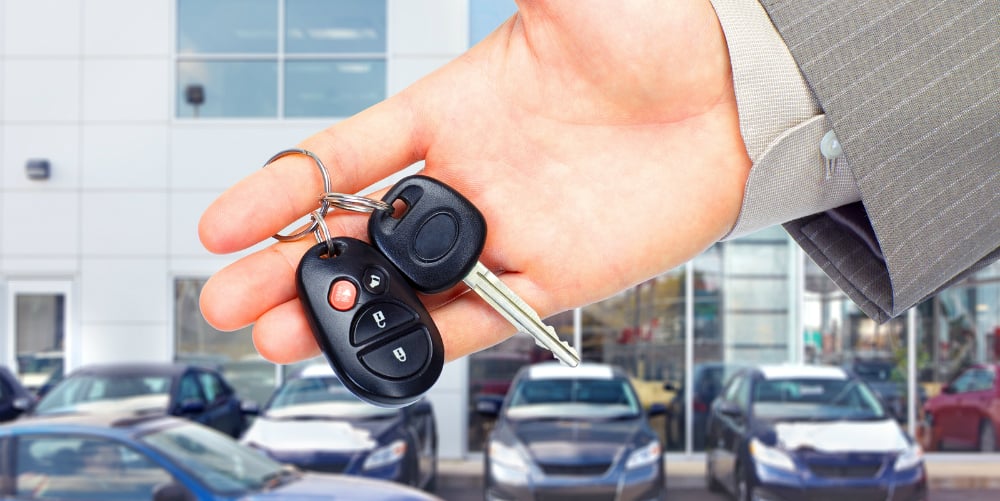4 consumer auto purchase trends to watch to make you a smarter lender

A new record was set in 2016 when 17.6 million cars and trucks were sold in the United States, marking the seventh consecutive year of increased auto sales, according to Automotive News. 48,000 of our friends, neighbors, and credit union members are buying a vehicle every day. While some may have a great car buying experience, a majority find the process to be a hassle. When asked if they prefer the current car buying experience as is, or would like to see significant changes, only 17 out of 4,002 consumers prefer the status quo, according to Autotrader’s Car Buyer of the Future study. The entire car buying process is in flux, and with it, consumer needs are constantly evolving when it comes to purchasing a vehicle.
As an auto lender, here are some things to keep in mind when it comes to auto loan purchase trends. Competitive auto loan rates are not the only thing that will help your institution remain top of mind when consumers are ready to finance a vehicle. Check out these four trends that will help you stay in tune with consumers and the marketplace, making you a smarter, more efficient, and more prolific lender.
Convenience of Online Shopping
Consumers have become accustomed to finding the easiest, quickest way of doing something. Instead of running to the grocery store, you can now have your groceries delivered to your front door. Bills are paid online, without the need for stamps, envelopes, or even checks. Tasks that used to be completed within set business hours or at a certain location, like banking, are no longer bound to a specific time or place. Car buying is no different. The traditional process of visiting dealerships, negotiating a price, and dealing with the F&I department sounds like a headache most consumers don’t want to deal with. Many are looking at new options to purchase a vehicle online. This new (and many say improved) method of car buying is on the rise and likely to keep increasing each year. Keep an eye on car buying services such as Carvana, Shift, Beepi, and Tread, where a consumer can locate a vehicle, get an offer for financing, obtain products such as GAP and warranty, and even have the vehicle delivered to their home, complete with their choice of bow color. 80% of consumers are already browsing and doing their vehicle research online, according to an Accenture study, and as the tools become available to make the entire process even more convenient, more and more of the traditional car buying process will fall out of favor. Online shopping gives busy consumers the ability to shop with ease right from the palm of their hand.
Changing Consumer Demographics
Remember when we were all focused on marketing to Baby Boomers? This generation once held a majority of the wealth in the U.S., and everyone wanted a piece of it. Well, the Boomers have met their match–here come the Millennials. In 2015, according to Goldman Sachs, there were 77 million Baby Boomers, and 92 million Millennials. Although, at that time, millions of Millennials were still unable to legally drive, 35% of all new auto loans were made to Millennials, according to Dealertrack. With so many options for getting from point A to point B, such as carpooling and ride sharing services, where it was once thought that Millennials weren’t interested in owning a vehicle, the data shows otherwise. According to Wards Auto, Millennials are only now entering their peak car-buying years. A possible reason for an increase in Millennial vehicle purchases could be the convenient lending and payment options that have been brought to the table.
Eco-Friendly Vehicles
In recent years, the variety of eco-friendly vehicle options for consumers to choose from has increased. There are more fuel-efficient and environmentally friendly vehicles on the road now than ever before. From December 2010 to August 2016, Americans purchased a half-million battery electric vehicles and the market is on pace to double that number within just a few years. With gas prices not expected to decrease significantly, you can expect more consumers to jump on the eco-friendly bandwagon in the coming years. Marketing to this trend can be as simple as featuring eco-friendly vehicles in your advertisements, or as focused as developing cash back incentives or special rates for consumers looking for a hybrid or electric vehicle.
Evolving Technology
From smartphones to smart homes and everything in between, consumers expect that high-tech features will also carry over to the vehicles that they drive. Consumers have been trained to look for the newest model for enhancements and upgrades that make a new purchase worthwhile. With this being said, many consumers are opting to purchase new cars due to the fact that the older models don’t come equipped with newer technology. With upgrades like an eye-tracking system that detects when a driver is distracted coming to the market this year, along with advanced safety features that prevent common driving mistakes such as unsafe lane changes, consumers can justify their new purchase by showing the improved safety of their new car. But with all these new “bells and whistles,” vehicles with these upgrades become more expensive to purchase and more expensive to repair. Make sure your staff is ready to discuss GAP coverage on any new vehicle purchase, as well as knows the cost of repairing some common safety features such as adaptive cruise control sensors, 360 camera systems, and blind spot monitoring systems. That new technology can be costly to repair, and the investment in major mechanical protection now can pay off with just one visit to the shop.
It’s obvious that consumers know what they want and what they want is convenience, choice, and the newest technology. In today’s environment, as more consumers are choosing the non-traditional way of purchasing and financing a vehicle, watching the market and adapting to the trends is key. These trends will continue to spill into the auto lending market giving your credit union the opportunity to capitalize on them to meet member needs, while boosting your auto loan growth. Listen to what consumers want and adjust accordingly.
With a tool like AUTOPAY from SWBC, credit unions can gain access to more than 80 million new consumers through an automated, fully mobile direct lending platform. Click here to learn more about AUTOPAY!





